
All categories
Featured selections
Trade Assurance
Buyer Central
Help Center
Get the app
Become a supplier

(1094 products available)










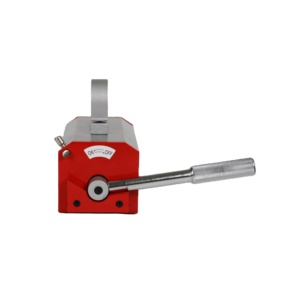
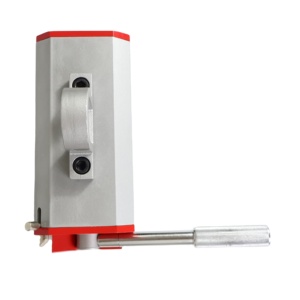


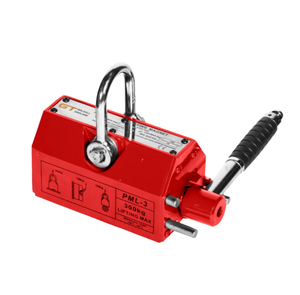
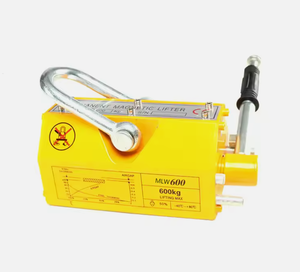

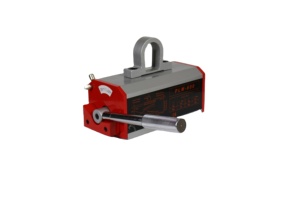



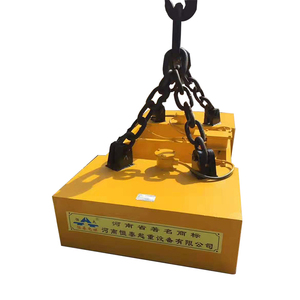


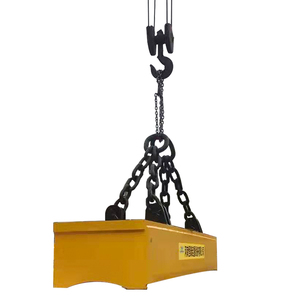









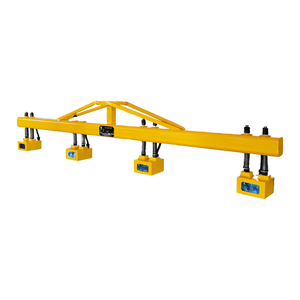
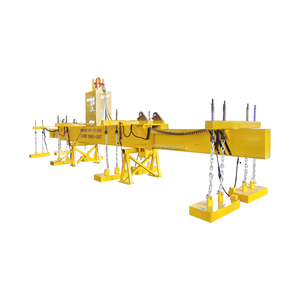














Heavy-Duty Lifting Magnets
These magnets are engineered to operate with maximum-carrying capability of large, heavyweight steel plates and structural fabrications. Usually, it's facilitated by a magnetic circuit, including ferrites and powerful neodymium magnets. These magnets are harnessed in large capacity workshop/inventories hoisting bulk items. Their solidity constructions and unyielding magnetic strength guarantee safe handling in such adventurous circumstances.
Battery Operated Lifting Magnets
These lifting magnets come with battery operation, a boon when electric supply is unavailable. A rechargeable battery power operates the magnetic field creation, ensuring lifting items are safely secured even in the remotely placed lifting operation. This design's convenience lies, especially in outdoor/logistic applications, where access to electric power isn't readily available. They provide lifting autonomy and come with a practical feature for emergency backup.
Double or Multi Pol Lifting Magnets
Such lifting magnets are designed to be heavier and bigger load lifting, especially thin sheets of metal. The two or multi-pole magnets ensure an even magnetic field distribution across the surface, increasing the gripping area. These magnets are extensively utilized in manufacturing/steel yard to tackle various dimensions of materials, proving flexibility with efficiency.
High-Temperature Lifting Magnets
These magnets are especially useful in hot working operations like furnaces, casting, or welding. Normal magnets will fail due to extreme heat, but such magnets are a special heat-resisting material that prevents demagnetization. They are perfect for maintaining magneticity when handling heated steel plates. They are important for adding safety when incorporating heat processes into metal handling.
Geared Lifting Magnets
Geared lifting magnets feature manual or mechanical operation with gear systems to enhance load control while lifting. The operation mechanism is simple sweet and involves a secure lift, which adds a turn and locks the load in the place magnetically. These are generally used in precision lifting situations where fine maneuvering while lifting heavy loads is required in tight space operations.
Steel Industry
Magnets lift positively make an impact on the steel industry. It plays a very important role in handling steel plates, coils, and profiles. They increase efficiency within the warehouses by automatically loading and offloading the materials within the production areas. Reducing manual handling increases safety, eliminating risks related to injury, and increasing operations' speed at a high capacity.
Manufacturing
In this manufacturing work, permanent electro-magnets are used to move workpieces during machinery processing. In machining, cutting, and welding, the magnetism of the workpiece maintains stability, increasing precision.ERP magnets are preferred over other conventional magnets because they have less energy consumption. This brings flexibility, especially when handling different shapes and sizes in this dynamic production environment.
Shipbuilding and Maritime Industry
Shipbuilding, thick lifting magnets used to handle large steel plates to transfer bulky materials within ship construction. They can lift securely designed loads, especially in adverse marine conditions. In port facilities, magnets are used for loading/unloading steelyard cargoes in containers, thereby improving the utitlization and exp implementation of space. ERP technology's magnetism provides high safety levels while compressing cumbersome, slippery items.
Construction
Magnets are useful when handling steel beams, reinforcements, and other metal components. Their use on construction sites cranes increase the efficiency of maneuvering materials with increased safety against metal slippage. ERP's versatility of operation, either with or without power, maximizes onsite and temporary connections to power grid systems.
Recycling Facilities
Magnetism finds application in sorting metal, particularly diasporic through conveyor belts in recycling centers. They separate ferrous from non-ferrous items, enhancing the purity and efficiency of the process. Recycling magnets are robustly designed to handle typical waste materials with a worn-out appearance. This versatility proves indispensable in driving green initiatives across various industries.
The tension of loads should be constantly checked using a load cell or tension meter; doing this reduces the chances of magnetic failure because of excess load, which can also be dangerous. ERP magnets perform well on heavy loads, but they should move gradually and after confirming that the load is balanced.
ERP magnets must undergo regular inspection for any physical damage, wear or corrosion, as these factors can reduce lifting capability. Further, ensure all safety features, emergency stop buttons, and interlocks are in place. Have maintenance schedules in place as prescribed by the manufacturers; this ensures the device stays in top working condition and creates optimum safety.
Use appropriate rigging hardware like shackles or slings made of steel. Whenever using ERP magnets, ensure that both the load and magnet are situated on a levelled surface. Any contact between materials that have different thickness may lead to unbalance and improper stability.
ERP manufacturers always have specific recommendations regarding what the lifting devices can handle. Always be careful when trace-using chemicals, debris, and non-ferrous metals, as they can interfere with magnetic fields and pose risks. Lifting and handling procedures should always be documented and strictly adhered to rules and regulations on safety published by authorities concerning magnet utilisation.
A1: It's a hybrid lifting device that lifts heavy steel or iron objects using electro-magnetic forces. Magnets are designed to operate in power and non-power states. Permanent magnets are fully energised, creating an electro-magnetic field with a slight energy draw to maintain the load. This makes it secure during power failures. This increasingly makes it ideal for lifting vulnerable objects in industrial settings.
A2: Electro-permanent lifting magnets combine the power of electro-magnetism and permanent magnetism. The load is lifted when the coil is energised to create an electro-magnetic field by a current. The permanent magnet within the core then holds the load safely, making it possible for a very small power (current) draw to keep the load in place. This unique process results in a safer operation because even with power failure, the load remains intact.
A3: Several factors affect lifting capacity. These are load material, surface quality, magnet size, and air gap presence. ERP magnets typically work best on ferrous materials with low magnetic permeability. Load surface must be smooth, any irregularity, thickness, or space difference creates air gap that reduces magnetism. Larger diameter magnets produce stronger magnetic fields, resulting in greater lifting capacities. Operating environment like temperature or contaminant also affects performance.
A4: Electro-permanent lifting magnets are always safe, operational, and cost-effective, as operational bespoke conductors consume power. Electromagnets require constant power supply to hold the load, which makes them more vulnerable during power outages. Electro-permanent lifting magnets can maintain loads during power outages because of permanent magnets within their design.
A5: Regular inspections and maintenance activities such as checking for physical damage, corrosion, and cleanliness need to be done. Battery-operated magnets require batteries to be regularly charged and checked.